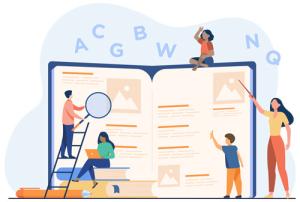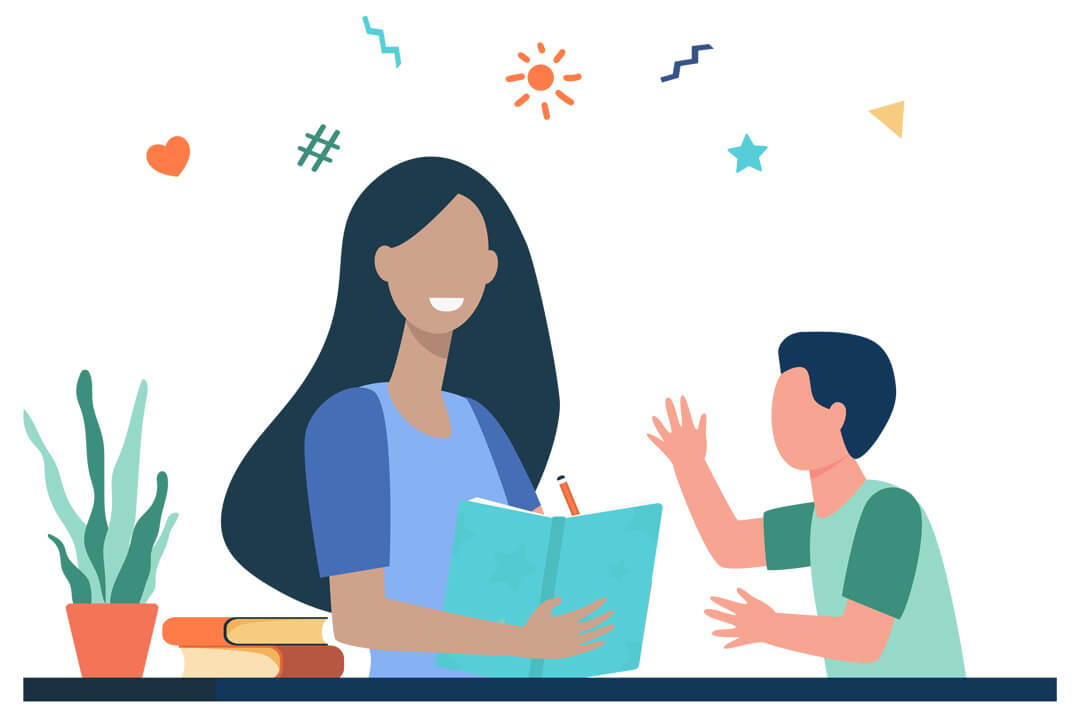Strong readers open up a new book with confidence and curiosity. They move through the text easily, getting absorbed in the story and connecting it to their own experiences. For them, reading is a source of pleasure — and applies to both academic and personal pursuits. But some kids need extra support in getting to this phase. So what are the steps educators can take in building strong readers?
First, a primer: the five pillars of early literacy include phonemic awareness, phonics, vocabulary, fluency, and comprehension. Each component plays an essential role in developing reading proficiency, supporting overall literacy development. These pillars are taught long before entering elementary school as young learners explore books, listen to stories read aloud, and acquire language. For educators working with students who are struggling with elementary reading skills, here are some popular techniques to support literacy development.
Phonemic Awareness
Phonemic awareness refers to the ability to identify the individual sounds (phonemes) in spoken words. Common ways of helping children identify phonemes in words include word games, rhymes, and tongue twisters. For example, “I am thinking of an animal that rhymes with hug. What’s the animal?” (Bug!) “What else rhymes with hug? (Dug, mug, rug, etc.) Spoken out loud, it helps struggling readers connect individual sounds to letters of the alphabet.
Phonics

Phonics refers to the relationship between letters and letter groups with sounds, which is key to decoding new words. In this phase, students begin to understand that there are spelling patterns and associated sounds. A popular technique to enhance phonetic understanding is finger blending. First, select words with simple phonetic patterns or letter combinations. Ask the student to say the sound of each letter by saying, “Sound” as you point to each letter. Then, pick up the speed and “blend” to connect the phonemes and read the word.
Have students practice with guidance and support, then independently. Instruction can be differentiated based on students’ proficiency by adjusting the difficulty of words. With a strong understanding of the relationship between letters and sounds, students are well on their way to becoming strong readers.
Vocabulary
Vocabulary refers to the store of words students understand and use in speech and writing. The more sizable the student’s vocabulary, the more able they are to identify and comprehend words quickly and easily. There are numerous techniques to building vocabulary, all of which rely on repetition.
To maximize the retention of new words, invite students to interact with a word in multiple ways. First, have the student write the word. Then, ask them to define the word. Next, ask them to put the word into a sentence. Then, request a visual representation or symbol of the word that captures its meaning. The more times a student engages with a word, the more likely they are to remember it and be able to identify it quickly in reading.
Fluency

Speaking of quick actions, fluency is another pillar of literacy development. When a student is able to concentrate on the meaning of a text with speed and accuracy, rather than each individual word, they have unlocked a major element in reading. To improve fluency, one common technique is a reader’s theater, which invites students to read a script aloud.
Participants take on different roles and read their lines aloud, aiming to convey emotion and intent. Scripts can range based on the student’s reading level, varying from simple sentences to complex paragraphs and entire pages. The more fluent a student becomes in reading, the more likely they are to become a student who reads for fun.
Comprehension

The last step in literacy development is comprehension — where the words become ideas and the student can have a meaningful interaction with the text. One such instructional tool that can help develop comprehension capabilities is a graphic organizer. They can be used to predict what will happen next in a story, compare and contrast characters and events, track plot development and themes, and summarize information — all of which supports reading comprehension.
For advanced readers, book groups are another way to build comprehension and understanding, using books that match the reader’s level. They also offer opportunities for collaboration and group work, enhancing team-building skills! As Dr. Jonathan Eakle, associate professor of curriculum and pedagogy at GW, explained, "In the end, how we understand what we read is applied to real life skills, such as using instructions to bake a cake, put together a mail order item, and to create complex problems and solutions."
No matter how you choose to transform reading instruction, understanding the basic components of literacy development and deploying them with your students will put them on the path to becoming a strong reader — and perhaps, one who learns to love the art of reading. For more intensive guidance using evidenced-based reading practices, there are numerous certificate and graduate programs available — such as the George Washington University’s Science of Reading or Literacy Education graduate certificates. These 12-credit programs prepare educators—including tutors, teachers, principals, and parents—to support all types of readers. Participants gain the skills and pedagogical expertise to help struggling readers, students with reading disabilities, and general education learners in classrooms and out-of-school environments such as after-school, museum, and library programs.


